In his book Marketing Made Simple, Donald Miller claims that if we master these 5 steps, success is assured. The only way it won’t work is if we don’t execute.
The 3 main problems this book offers solutions to:
– Audience bounces off in a few seconds and doesn’t get interested
– Audience gets hooked but doesn’t understand how you can help them
– Audience is interested and understands how you can help them but there’s not enough trust to purchase

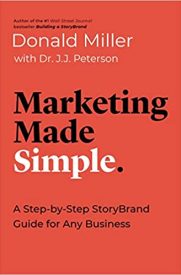
Book Table of Contents
Credits and Dedication (01:42)
Introduction: Marketing Should Be Easy and It Should Work (04:45)
Chapter 1: The One Marketing Plan You Will Never Regret (05:38)
Chapter 2: The Actual Stages of a Relationship (25:12)
Chapter 3: An Introduction to the Marketing Made Simple Checklist (11:27)
Chapter 4: Create Your One-Liner (24:56)
Chapter 5: A Wireframed Website That Works (20:17)
Chapter 6: Lead Generator (27:27)
Chapter 7: The Power of Email (05:06)
Chapter 8: Nurture Email Campaigns (24:09)
Chapter 9: Sales Email Campaigns (11:10)
Chapter 10: How to Execute the Marketing Made Simple Sales Funnel (19:04)
Conclusion (00:31)
Bonus Interview (16:45)
Decision Process
1. It’s a popular book in the marketing sphere – So again, as almost always, one of Robert Cialdini’s 6 principles -Social Proof, of the book Influence had a hold on me 🙂
2. I have recently watched a review by Rick Kettner at which he suggests reading this book.
3. I have already read two other books of Don – “Building a StoryBrand” and “Business Made Simple” and they were pretty cool, thus it made me interested in learning more.
Book Attributes
Author
Donald Miller is the CEO of Business Made Simple and the author of a few books, among them the bestsellers “Building a Story Brand” and “Marketing Made Simple“. He also runs the Business Made Simple Podcast.
Length
Paperback: 208 pages
Audiobook: 4h 19m
Reviews
As of 06.06 Marketing Made Simple has 932 reviews on amazon.com 85% of which are 5 stars , and 10% are 4 stars.
Introduction

This book is an oversimplified step-by-step marketing plan, which is extremely geared toward Implementation (I most definitely don’t say that about every book). Keep reading and get a taste of the great value this book offers!
5 Steps To Building a Great Business
Step 1: Create a Brandscript
The First part of the book and it’s 3 chapters are dedicated to this step.
They explain how building a funnel is the most important thing that will lead you to success.
But before starting with the process we must Create a Brandscript or in other words – Clarify our message.
Here’s how to do that according to the book:
The 3 Stages of Relationship

The relationship between our audience and our brand is like a romantic relationship between a man and a woman, or any relationship for that matter. It follows 3 steps.
1. Curiosity
Getting some sort of Impression that this person could help us survive and thrive.
Example: When you share the same interest with a woman, it is a potential to building a tribe, and building a tribe vs. being alone, helps us survive.
In business – your Hooks* or headings are the ones that evoke curiosity.
2. Enlightenment
After seeing the potential for helping us survive and thrive, we probe further to see whether our impression was true.
If it was, we want to check how exactly can we use this relationship best.
This is like the dating phase. In business it’s when you tell the audience how the product could solve their problems, not how to use the product.
If the header is the curiosity part, this is the next line after it.
3. Commitment
This is where a person puts his skin in the game, the engagement, the purchase. This usually requires 5-8 successful interactions (which means you have to initiate about 40 content pieces, from which they’ll only interact with about 5-8.)
Branding vs. Marketing
Marketing is when you present to your audience how your service could help
Branding is about the look and feel during using the service
Marketing comes before the purchase
Branding comes after purchase
In order to get engagement we must make the utility of our product clear not just wrap it nicely.
Example
So for example my website header just stated – “Work Hard and Achieve Your Goals” – but it doesn’t say anything about the product, though it might be an ok branding Branding tool, it does not bring new customers these are blank words for them.
So I wrote – “Marketing Book Summaries to Improve Your Business”.
Step 2: Create a One-Liner

Present what you do in a sentence and evoke curiosity.
This sentence consists of 3 parts: Problem, Solution, Result.
Let’s break down how to form each.
1. Problem
What is the ONE biggest challenge that your audience faces?
For you guys I believe it is having to “hope” that a book you’ve just picked will be good instead of knowing it.
One thing to consider: The problem should be one you can solve.
2. Solution
Clearly state the solution.
NOT Stop “hoping” that the next marketing book will bring you results, Improvementor Marketing Summaries posted approximately once in two weeks
Rather Stop “hoping” that the next marketing book will bring you results, Improvementor Marketing Summaries will clarify what problems these books are solving
One thing to consider: Keep it simple – No insider language.
3. Result
Tie it up in the picture of success.
Stop “hoping” that the next marketing book will bring you results, Improvementor Marketing summaries will clarify what problems these books are solving, which will result in clarity about whether they are directed to solving yours.
One thing to consider: Do not overpromise
P.S. Applying the problems the books solve to all the posts will take some time, so don’t crucify me in the meantime, perhaps I’ll even include takeaways instead. 🙂
Step 3: Wire-Frame a Landing Page/Website

This is the biggest part of the book, while all the other steps have up to 40 minutes devoted to them, this one is double that.
It mostly concentrates on the important sections which increase the engagement with your website.
3 Frequent Mistakes That are Made on Websites
Here are 3 of the common mistakes that occur on websites according to Don of which I am or was a sinner of by the way. 🙂
1. The site does not promote a lead generator (Or in my case the right lead generator for the target audience – I had a 4 Self Improvement Books PDF which is geared toward beginners, while my target audience is further along the entrepreneur journey).
2. The images do not relate to the product or back-up the words you use on the page. (Explained in the Takeaways)
3. The site tells your story rather than inviting customers into a story.
The book has 6 more of those if you wish to go deeper 🙂
3 Captivating Sections of a Website
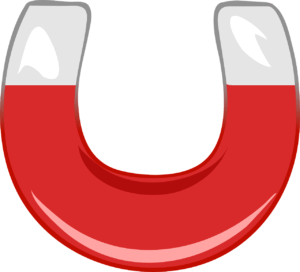
Here are 3 sections of a website that attract audience, each one of these you include will raise the engagement more and more.
1. The guide – The section where you introduce yourself as the brand or the person who can solve your customer’s problems I guess this refers to a section inside the page itself besides the “About Me” page.
2. The stakes – Explain what you save your customers from. I.E. Realizing you chose a book that didn’t address your problems.
3. The plan – The path a customer must take to be in business with you and solve their problem.
Don’t go more then 3-4 steps.
Inside the book there are 6 more just as with the frequent mistakes.
Step 4: Create a Lead Generator
A great interest indicator
The lead generator is already a commitment, the one liner was the first impression and the website was dates 1-3.
If you’ve gotten this far, congratulations, you have someone who is very interested in what you offer.
The most simple and cost effective option for lead generation is a PDF.
Creating a PDF (Lead Magnet)
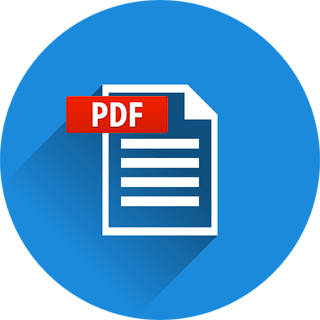
Give them a reason to give you their e-mail address or they won’t.
3 things it should accomplish
Here are 3 of the many things a PDF should accomplish according to Don.
1. Position You As An Authority
Show that you are in the position to help your target audience (Provide knowledge that one can see requires research and expertise).
2. Qualify Your Audience
Make sure that the headline and therefor content attracts the specific audience you’re targeting, so that you will know what marketing content to show them further.
If you want to target another type – create a seperate PDF for that.
3. Create Reciprocity
As Robert B. Cialdini mentions in his popular book Influence – Reciprocity is one of the strongest influence methods that are ingrained into us as humans. If you provide a solution to the audiences problem for free, they will with an almost certain probability want to return a favor or continue engaging with you.
3 Ideas for a PDF
1. An Interview with an expert in your industry about a problem that interests your target audience.
2. Checklist – A list of Ideas to consider when having a specific problem
3. Pitfalls list – This will concentrate on things that your target audience wants to avoid in a certain subject. Like this 5 Common Marketing Mistakes from 5 Known Marketing Books PDF
The 3 parts of a PDF creation
1. Make a curiosity evoking headline.
2. Give valuable content that will solve the audiences problem, it may be around a 20 minutes read, but doesn´t have to be long.
3. Insert it in a section on your website or content.
Step 5: Create an Email Campaign

This is basically the part where you create a long- term relationship with your audience and may also lead to a sale. One may say “No mails no sales“. 😀
There are 2 types of mail campaigns – Nurture and Sales.
Nurture Campaigns
The first group of E-mails that Don encourages us to develop is nurture mails, those are mainly geared towards delivering free value. These mails should have “by the way” CTA’s that you mention in the bottom of the mail but the main goal of a nurture e-mail sequence is to solve the audience’s problems and not to sell.
Got your first lead? Here are some tips.
I believe that you should start creating your mail campaigns when you get your first lead, because it may take some time until you do.
For those of you who are already past that point here are a few tips for writing mails:
1. Use simple language – If you try to sound too smart it actually sometimes has the opposite effect.
2. Use short paragraphs – it’s not a book.
3. Write as if you were talking to a friend
But what should I send?
2 Simple Ideas of the many that Don presented are:
1. Weekly posting announcements – Let them know what you posted throughout the week
2. Weekly tips (Recipes/How to, etc.)
Consistency is Key!
If there’s one thing that both you and I should take away from this chapter is to be consistent!
If we don’t mail at least once a week than we are losing out and being forgotten.
As Don says: It’s the same as he convinced his wife to marry him…
He just rode his bike by her house until she agreed.
Sales Email Campaigns


How to close the deal.
1. Be very bold in selling – Shyness indicates uncertainty about the product.
2. Be sure that your product is solving a problem and which problem it is.
3. Sell only ONE single product in each campaign.
4 Takeaways

1. Think of the problem that you solve
All your content should be a result of the problem you solve, for example, on my homepage it would say Improvementor – Work Hard and Achieve Your Goals, but this could be a Gym, Math lessons or anything else for that matter. That’s why I wrote “Marketing Book Reviews to Improve Your Business”, now it became a bit more clear!
Don't say "Save Money, Save Time" say "The oil that you need to replace once a year"
2. Targeted Images of Success
Use images of the success your specific audience desires
I used to have the image on the left, now I have a few Images as the one on the right. One is completely general, another broadcasts entrepreneurial success


3. Re-design the "Books" Page
Now that I’m pretty sure that the main problem I solve is helping you decide which books are more likely to help your business, and not just present their Ideas, I have started to redesign the books page to include my takeaways from books and rating.
4. Update the "About Me" Page
When Don was speaking about “the guide” section, I was reminded that my “About” page is very out of date and should be tended to.
By the way it should also include a “Featured Posts” section according to The Platform by Michael Hyatt
My General Experience of Marketing Made Simple

I realized that I am a sinner in so many aspects of marketing especially when it comes to the website.
It seems I have neglected it for too long, and avoided it while concentrating on YouTube instead.
I have learned countless things that I’m doing wrong in this book and therefor I would also suggest it to you.
Also, as I was writing this blogpost and going over the contents of the book I couldn’t concentrate because every second line was itching my hands to apply it!
Thanks to this book I’ve found out that saying “I’ve got a lot to learn” is an understatement. I realized I am still not even fully aware of which is the problem that I solve, which seems to be such a basic topic…
So now that I’ve got some knowledge, it’s time to get to work 🙂
Rating (6 Parameters)
Narration
Clarity of Speech
Fluency
Expressing Emotions
Plot
Is there a storyline? How connected is one Idea to the one before it?
Answer: Just as with the 1-Page Marketing Plan the story is the journey of the customer, while not all the ideas within each chapter are a story, the main plot does follow a simple, logical order.
And for a marketing book that exceeds the expectation: 10/10
Heading Distribution
Drive For Implementation

How much does the book push you to apply it’s contents?
Visuals
Does it use images or other resources to transfer it’s message?
Answer: There’s a pretty detailed Workbook-style PDF, but it has very few images. 4/6
Direct Calls to Action
How often does the author prompt you to apply the ideas in the book?
Answer: Basically every second of the book 😉
6/6
Providing Actual Specific Details
Can you actually apply the Ideas in the book without additional resources?
Answer: Most definitely yes, though it is in relation to the point in which you are in business, for example not everyone has employees so chapter 10 can’t be applied until you get some. 7/7
Examples
Content
How interesting/useful was the content?
Answer: Very useful and practical, apart for chapter 10 which requires employees.
19/20
Final Rating

Narration – 20/20
Plot – 10/10
Heading Distribution – 9/10
Drive for Implementation – 18/20
Examples – 20/20
Content – 19/20
Final Rating – 96/100
Conclusion

Marketing Made Simple is an excellent book, which really does have tons of practical information to apply.
It has tools for you to improve your website, your overall brand identity, create a lead generator and an e-mail campaign, I highly recommend it, I’ve already started Improving my website because of it and it seems much better!
Acquiring Options
Here’s what to do and exactly in what order to get you out of a hole, because this is a book about implementation.
!Disclaimer – I may be rewarded a commission if you proceed through some of those links, and some of the links throughout the post, for which I will be thankful 🙂
Freebies/PDFs
Related Articles
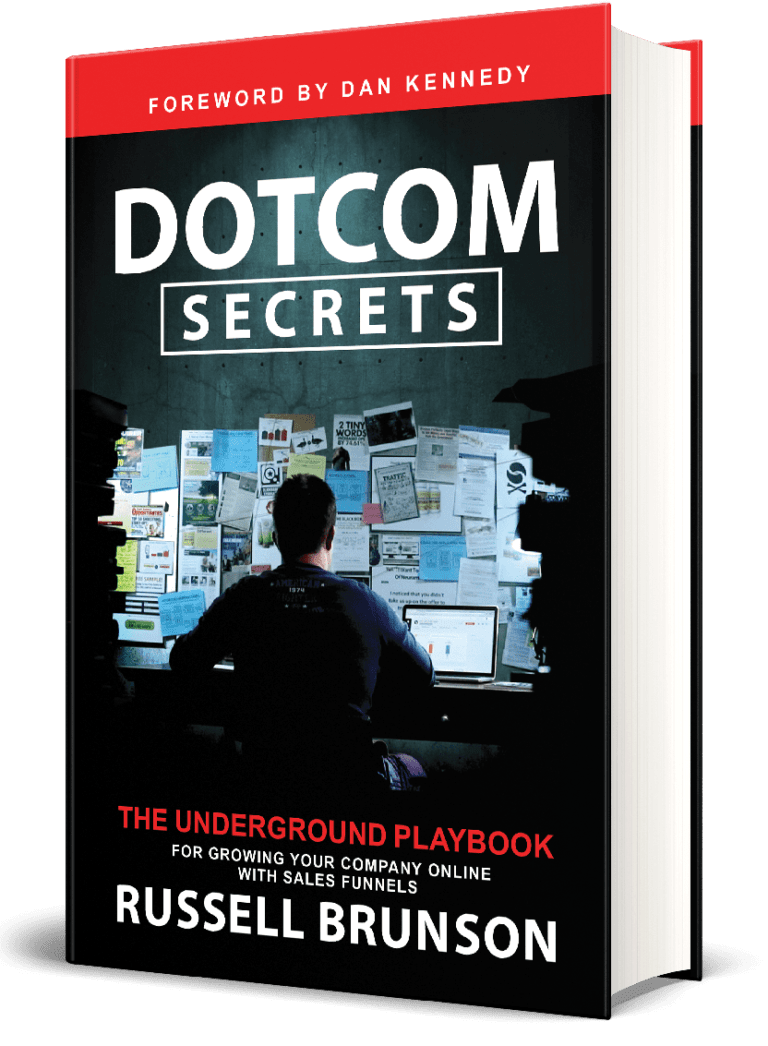
28 DotCom Secrets for Internet Marketing Mastery
Is the best-selling first book of Russell Brunson “DotCom Secrets” really worth the fuss? Animated Summary Book Table of Contents Introduction Opening Credits (00:00:13) Introduction
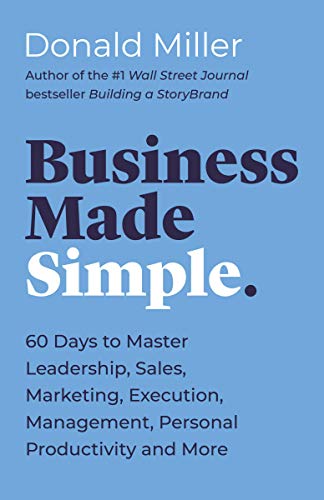
Business Made Simple Should I Read This Fine Book?
Wondering whether Business Made Simple by Donald Miller will help you with your business? Want to get a taste of a few of it’s Ideas
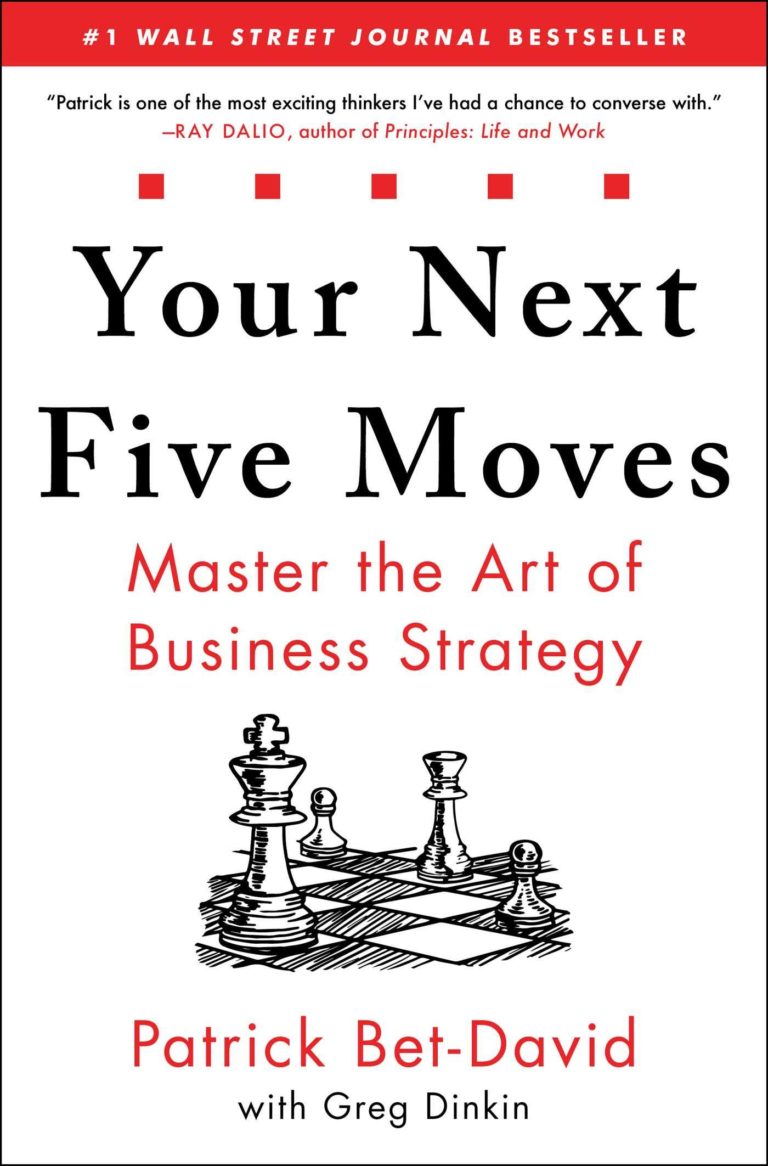
Your Next 5 Moves For A Thriving Business – Detailed Review
A detailed summary of a business strategy book with your next 5 moves. Written by the creator of one of the leading YouTube channels for







